02/07/2019
It wasn't that long ago when you only had one kind of approach with vertical guidance: the ILS. And if you weren't flying an ILS, you were managing step-down altitudes on a non-precision approach.
Now, all of that has changed. Over the past several years, the FAA has created GPS based LPV and LNAV/VNAV approaches at thousands of airports across the US. With GPS, the number of approaches with vertical guidance has tripled. But in many ways, so has the confusion.
So what's the difference between LPV and LNAV/VNAV approaches? They're both GPS based approaches with vertical guidance, but the similarities end there.
LPV: Localizer Performance With Vertical Guidance
LPV approaches are a WAAS/GPS based approach, and they're very similar to the ILS. But there is a difference. Even though LPV approaches have vertical guidance, they're not considered precision approaches. Instead, they're an approach with vertical guidance (APV).
So what's the difference? APV approaches don't meet the ICAO and FAA precision approach definitions, which apply mostly to localizer and glideslope transmitters. The precision approach definition also carries a lot of documentation, definition, and cost with it, so the FAA and ICAO adopted the APV definition, so they could build new approaches and not be burdened with the cost and paperwork.
So how do they work? The extremely accurate WAAS system (7.6 meters or better accuracy) gives you lateral and vertical guidance down to a decision altitude (DA) like an ILS. And, just like an ILS, an LPV approach's angular guidance gets more sensitive the closer you get to the runway. Keep in mind though, to fly them, you need a WAAS receiver. A baro-aided GPS won't work.
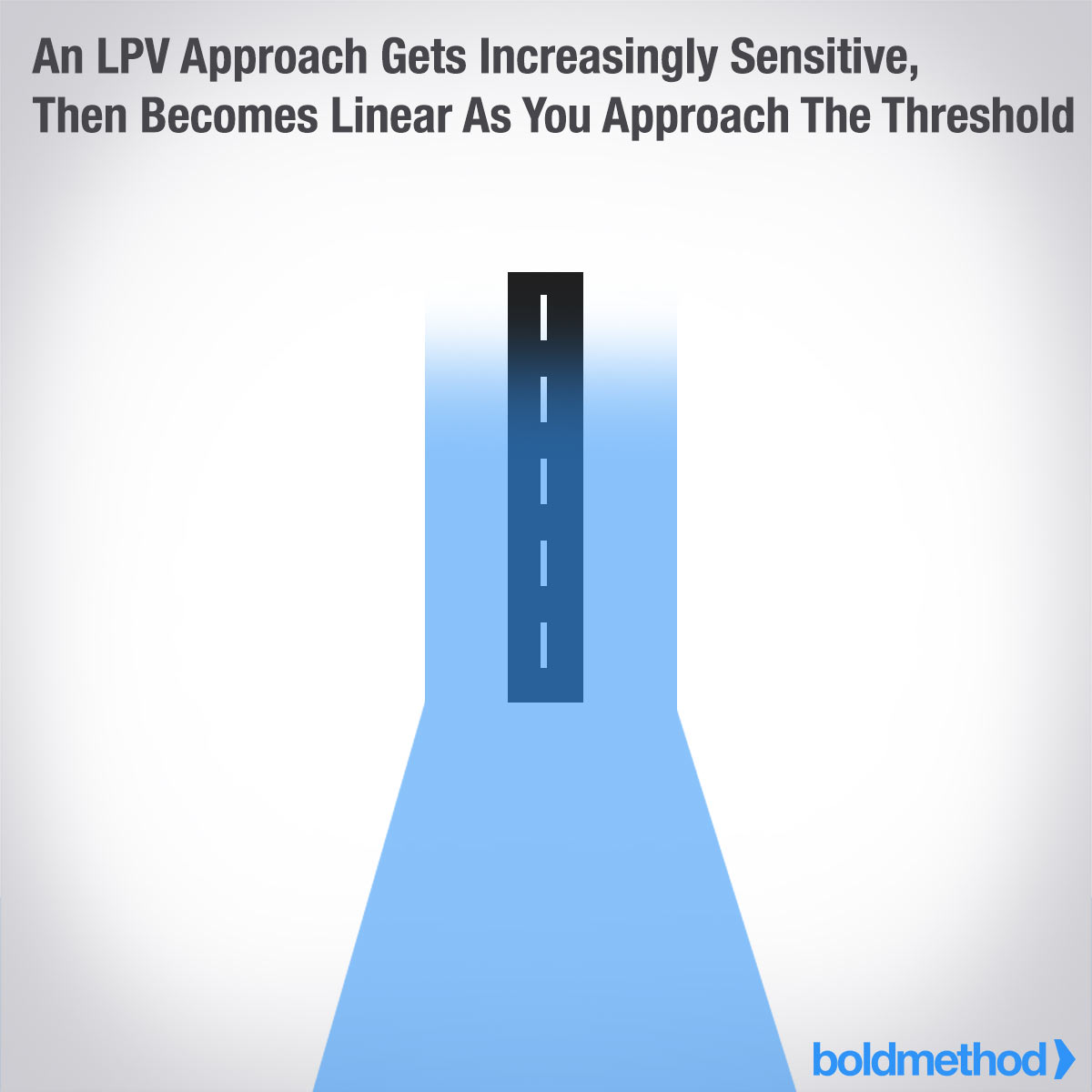
There's definitely an advantage to LPV. Unlike an ILS, which gets more and more sensitive and difficult to fly near and below DA, the scaling on an LPV approach transitions to a linear scaling as you approach the runway. It has a total course width of 700' (usually) at the runway threshold. That 700' of width at the threshold is the same as an ILS localizer at the threshold, but it doesn't get any tighter than that as you continue to touchdown.
LPV approaches get you low as well. Like an ILS, most LPV approaches will get you down to 200' above touchdown, with 1/2 mile visibility.
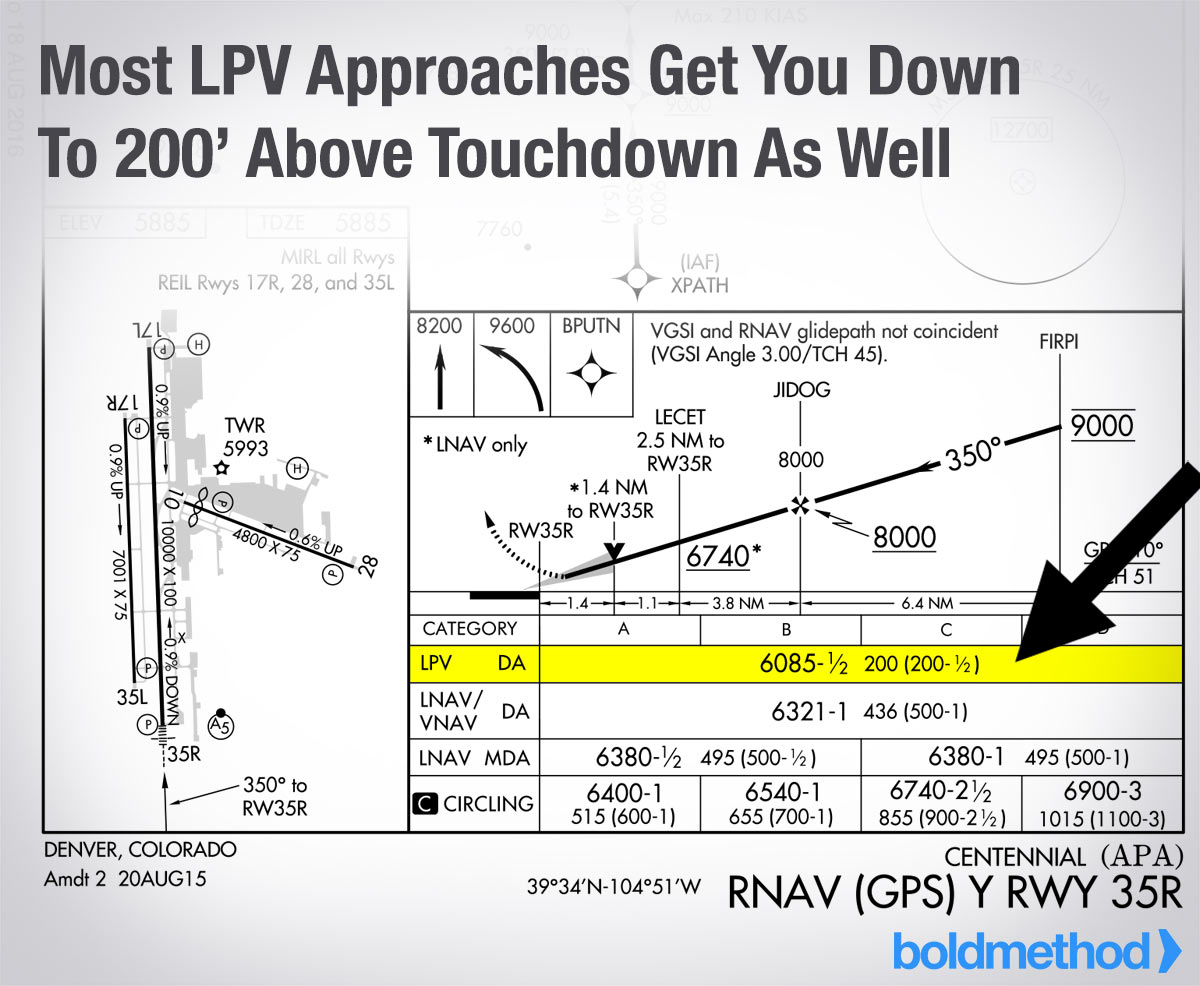
But there is a downside. Since LPV approaches aren't considered precision approaches, you can't use precision alternate minimums for airports that only have LPV.
According to the FAA, if you're using an airport with LPV only (no ILS or other ground-based navaid approach) as your alternate airport, you need weather minimums that meet the LNAV or circling MDA, or the LNVA/VNAV DA if you're equipped to fly it. (There are a few more details as well, which you can find in AIM 1-2-3, paragraph D.)
LNAV/VNAV: Lateral Navigation/Vertical Navigation
The second type of GPS based APV approach is LNAV/VNAV. LNAV/VNAV approaches were actually the first type of GPS approach that had vertical guidance. They were originally designed for baro-aided GPS units, but most WAAS receivers can use them today as well.
Unlike LPV approaches, LNAV/VNAV approaches don't have increasing angular guidance as you approach the runway. Instead, they're just like an LNAV only approach, decreasing to 0.3 NM sensitivity when you're within 2 miles of the final approach fix, all the way to the missed approach point.
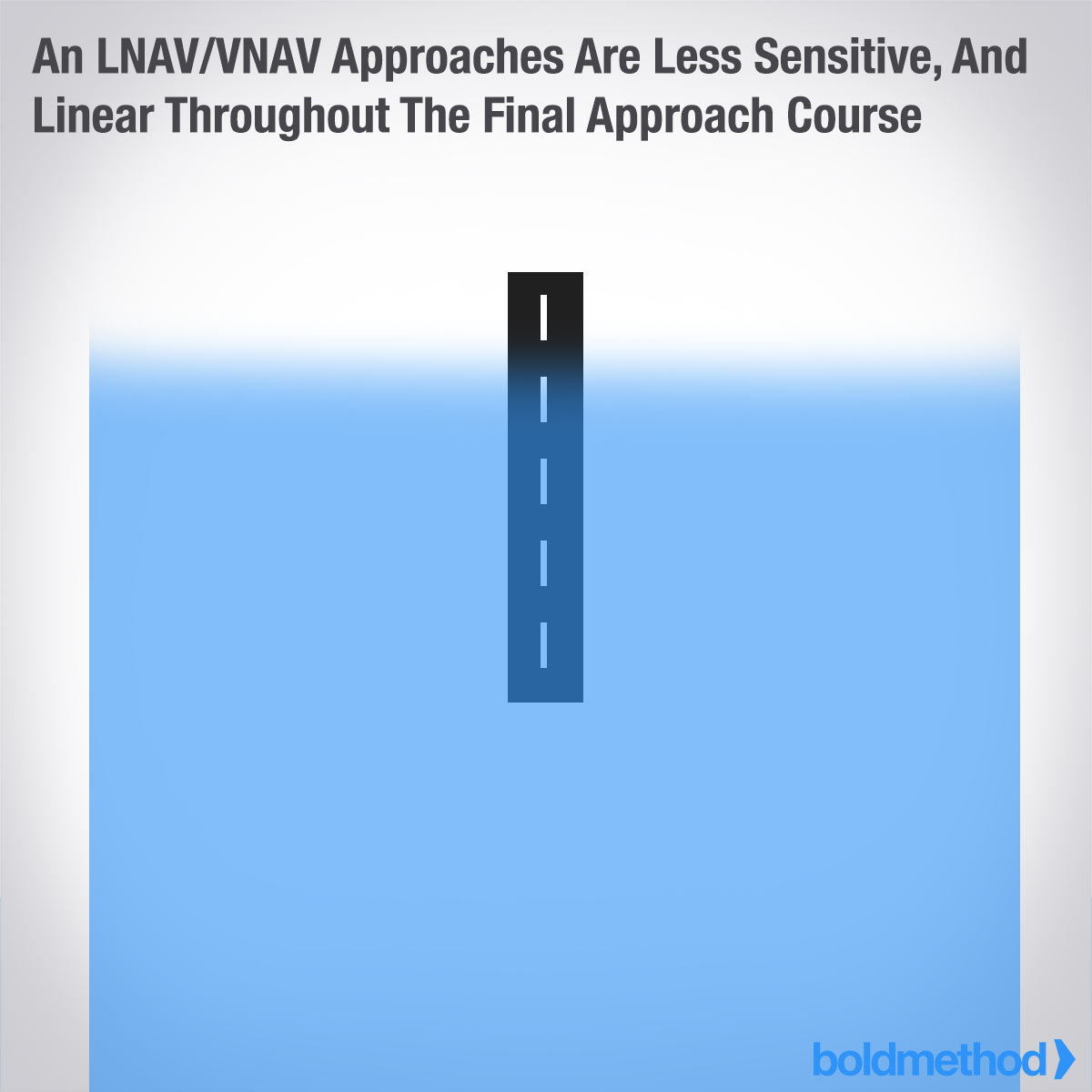
Because the final approach course is linear the entire way to the runway, the lowest an LNAV/VNAV approach can get you is 250' above touchdown. And because the sensitivity isn't as high as LPV with WAAS, the obstacle trapezoid (the area the FAA draws to make sure you have safe obstacle clearance on an approach) is much larger for an LNAV/VNAV. Because of that, you typically see LNAV/VNAV minimums higher than 250' above touchdown for most approaches.
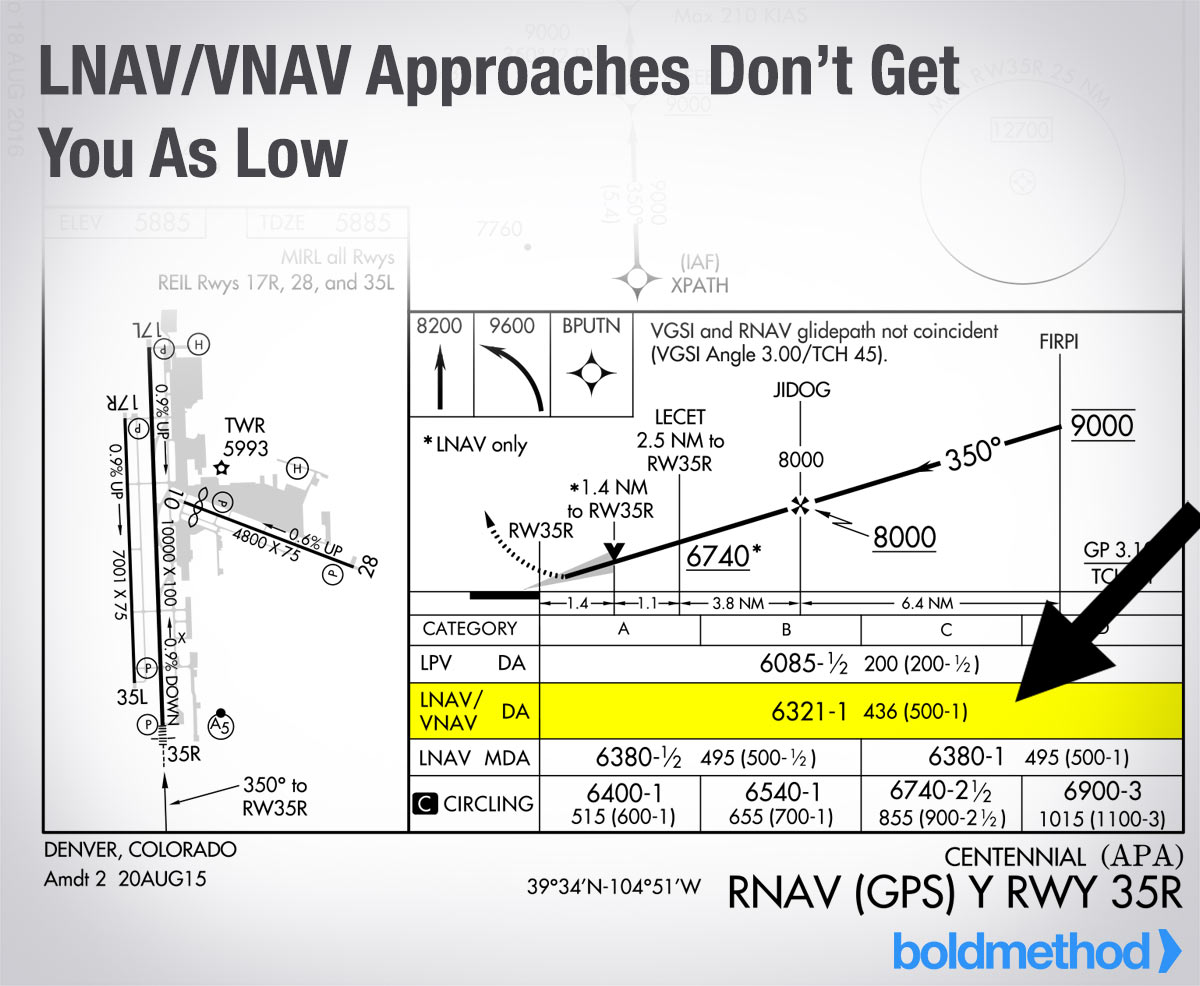
What About LNAV +V?
At some airports, the FAA isn't able to design LPV or LNAV/VNAV approaches because of terrain and obstacles. When that happens, you're stuck with the old-school LNAV only approach, complete with step-down altitudes. But when they can, the FAA adds "advisory vertical guidance", which you see on a WAAS-capable GPS system as "LNAV+V".
You won't see the "+V" listed on a chart, but you will see it listed on your GPS unit's display when you load the approach. That's because +V capability is specific to the type of GPS unit you have in your plane.
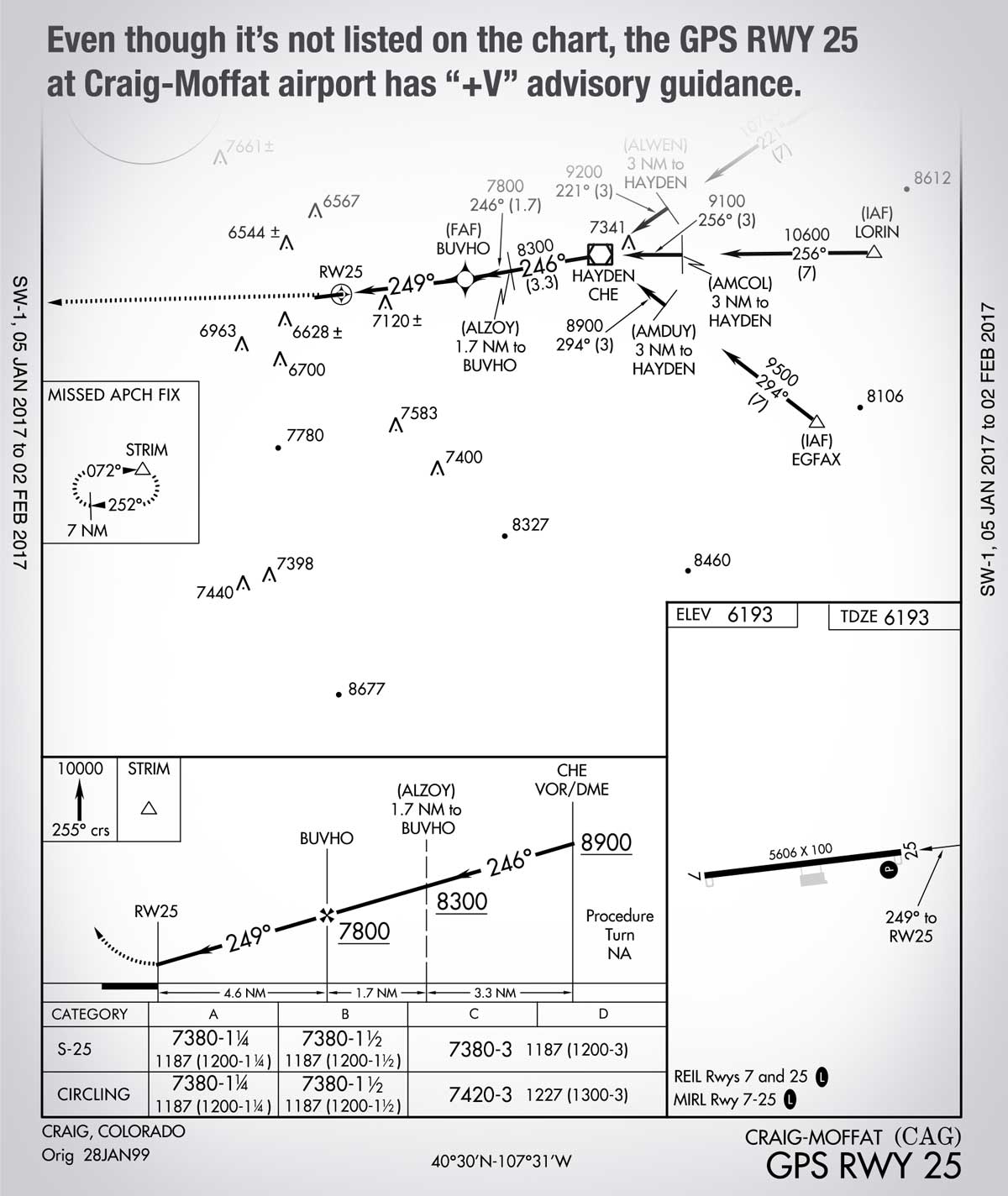
When you fly an LNAV +V approach, you need to use LNAV minimums, but the +V will give you an advisory glide path all the way down the approach. Keep in mind, it's possible +V could take you below step-down minimums, so you need to keep an eye on your altitudes. But overall, having a glide path generated for you on a non-precision approach is a pretty nice thing to have.
Flying The Approaches Of The Future
You have more choices than ever before on the type of vertically guided approach you fly, and that's true for almost all instrument airports in the US. Given the increased choices, you have better options to land the direction you want to at your destination. And even with the extra approach types you need to know, having more approaches to pick from makes flying safer and more convenient.


No hay comentarios:
Publicar un comentario
Espero atento tus comentarios